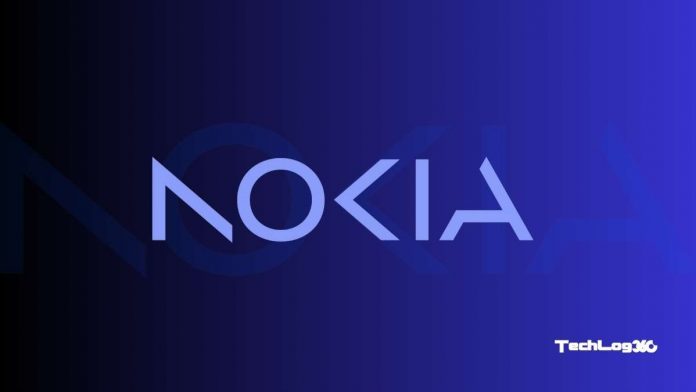Web design is all about creativity; as a developer, there’s nothing more satisfying than creating engaging user experiences. However, this creativity is often overshadowed by the technical complexities of coding. This is exactly where an easy HTML editor comes into play. It can streamline the coding process and remove the coding frustrations from you as it helps transform the web design process.
An easy HTML editor lets developers focus on channeling their creativity without spending time on coding technicalities. They remove the roadblock of coding to focus more on their creative ideas and less on the technical intricacies. As a result, you get more time to experiment with newer, more intuitive designs.
This article is your guide to how easy HTML editors are to use and how they bring features that make them ideal for design and promote creativity. We will also deeply investigate Froala’s features, which are tailor-made for developers looking to step up their web design game.
Contents
- 1 How an Easy HTML Editor Enhances Creativity
- 2 Features That Make an HTML Editor Ideal for Creative Design
- 3 Exploring Froala’s Creative Features
- 4 Benefits of Using an Easy HTML Editor for Creative Projects
- 5 Getting Started with an Easy HTML Editor for Creative Work
- 6 Conclusion: Transforming Design Through Simplicity
- 7 FAQs
How an Easy HTML Editor Enhances Creativity
An easy HTML editor is a transformative tool that enhances creativity in web design through the simplification of HTML code and intuitive features.
Flexibility in Design
An easy HTML editor provides flexibility, allowing designers to instantly test our designs and layouts. They don’t have to write a coding sequence to test the new intuitive HTML design. The faster the designer can test new designs, the faster they can see what works best.
Templates and Themes
Templates and themes are essential features of easy HTML editors that help you bring ideas to life. These editors have a number of pre-designed templates and customizable themes to use as the starting point for your intuitive designs. You can select the template that fits your vision and customize it to your needs. Not only will this save time, but also ensure that you can properly express your creativity.
Collaborative Features
Real-time collaboration is a major need for modern remote teams. The easy HTML editors have collaborative features that enable multiple team members to work on the same project simultaneously. This allows team members to share ideas, provide feedback, and make collective decisions quickly in real-time.
Features That Make an HTML Editor Ideal for Creative Design
Let’s have a look at some of the features of the easy HTML editors that make them so perfect for creative designs.
Rich Media Integration
Easy HTML editors come with rich media integration. What does this mean? They help designers effortlessly create
- Images
- Videos
- Multimedia elements
This feature is crucial for creating engaging and interactive websites.
Customizable Interfaces
A customizable interface is a significant advantage of an easy HTML editor. These editors allow designers to personalize their workspace according to their preferences and needs. How? Through the customizable toolbars, layout options, and theme settings.
Extensive Plugin Ecosystem
The top-tier easy HTML editors have an extensive plugin ecosystem. These plugins allow you to look beyond HTML editing and emphasize creativity. Developers love playing around with these plugins, from formatting options to SEO tools.
Exploring Froala’s Creative Features
Froala has always stood out in the list of premier easy HTML editors thanks to its many features. Let’s see some of them below.
Theme Manager
Froala’s theme manager allows designers to easily switch between and customize themes to fit their project’s aesthetic. This feature simplifies applying consistent design elements across a website. With a more congruent theme, your project will also feel and look smoother.
Quick Insert Tools
The quick insert tools in Froala make adding elements like images, videos, tables easier with just a few clicks. Naturally, these tools expedite the content creation process by reducing the overall steps required to create this solid content.
Plugin Support
Froala’s plugin support is second to none. It multiplies effortless web editing and user experience through advanced formatting, code syntax highlighting, and real-time collaboration features.
Benefits of Using an Easy HTML Editor for Creative Projects
If you want to use easy HTML editors for creative projects, here are the benefits you will love.
Speed and Efficiency
Who doesn’t like to work efficiently and quickly, right? These easy HTML editors allow you to use your creativity quickly and quickly. They remove the coding complications and bring in features like drag-and-drop and real-time previews that serve you well.
Accessibility
Easy HTML editors make web design more accessible to non-technical designers. Since there is no need to mess with the code, non-technical designers can join in on the fun and demonstrate their creative prowess.
Quality of Output
A user-friendly HTML tool, such as an easy HTML editor, can provide ease of use that can lead to better, more thoughtful designs. Designers who focus on creativity rather than technical details are more likely to produce creative and high-quality projects.
Getting Started with an Easy HTML Editor for Creative Work
As the name suggests, easy HTML editors are pretty straightforward to work with. Here’s how you can get started with an easy HTML editor for creative work.
Organizing Your Workspace
First things first, you need to organize your workspace in a manner that suits your workflow. You’ll need to customize the tools and plugins you will use most frequently. They should be highlighted and more accessible so you don’t waste even a single second looking for them. For instance, Froala offers customizable toolbars and layout options that allow you to create a workspace tailored to your needs.
Utilizing Froala’s Creative Tools
Froala provides a variety of creative tools that can give your design projects a new feel. HTML editor features like the theme manager, quick insert tools, and extensive plugin support are reasons why it is considered a top-of-the-line editor.
Integrating with Other Tools
If you want an even better workflow, just integrate your editor with other tools and platforms you use. Whether this is a content management system (CMS), a design tool, or a project management app, you can blend it all together. Many easy HTML editors, including Froala, offer integrations that enhance functionality and improve your workflow.
Conclusion: Transforming Design Through Simplicity
An easy HTML editor simplifies the web design process, enhancing creativity, speed, and accessibility in a way you haven’t seen before. These tools are superpowers that can help you bring out your true creative prowess and create designs that are awe-inspiring. With advanced features like rich media integration, customizable interfaces, and extensive plugin ecosystems, designers can embrace a whole new level of power and freedom of design. So, are you ready to explore the true creative spirit you possess?
FAQs
How do easy HTML editors enhance creativity in web design?
Easy HTML editors simplify coding tasks and provide intuitive features, allowing designers to focus more on creativity and experimentation.
What are the benefits of using Froala as an easy HTML editor?
Froala offers features like a theme manager, quick insert tools, and extensive plugin support, making it a versatile and powerful tool for creative web design.
Can non-technical creatives use easy HTML editors effectively?
Yes, easy HTML editors have user-friendly interfaces and tools that simplify complex coding tasks, making web design accessible to non-technical users.









